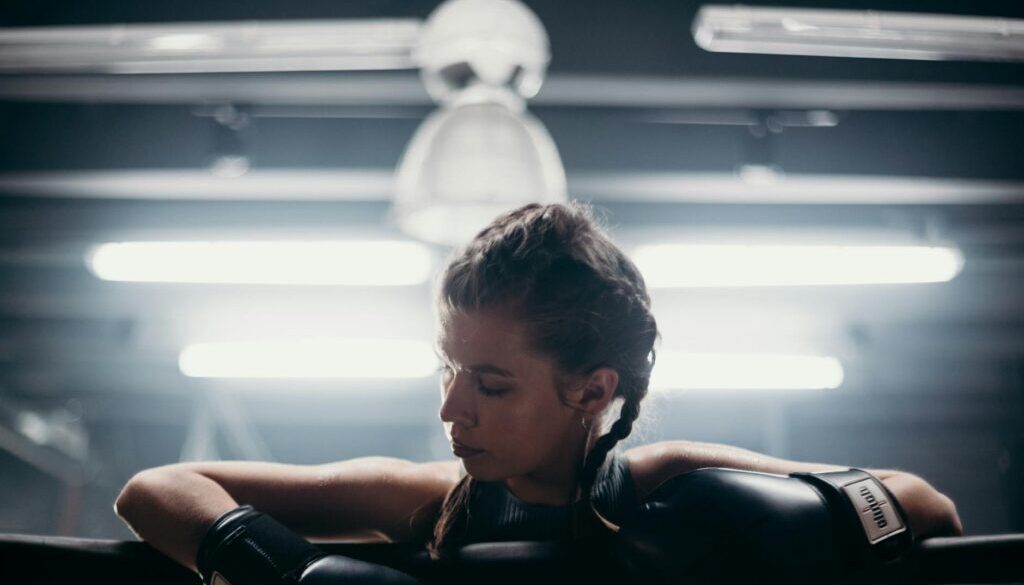How do professional athletes train?
Ever wonder why LeBron James still drills basic dribbling skills at 38? Or why Simone Biles spends 32 hours weekly in the gym even after winning Olympic gold?
Professional athletes don’t just practice—they obsess. They dissect every movement, leverage cutting-edge technology, and push physical boundaries most of us can’t comprehend.
This isn’t about natural talent anymore. Modern athletic training combines sports science, psychology, nutrition, and recovery methods that transform good athletes into legends.
The difference between Olympic gold and fourth place often comes down to milliseconds or millimeters—margins so thin they demand perfection in how professional athletes train.
But here’s what most people miss: behind every highlight reel moment lies thousands of hours of invisible work that would break most humans.
Physical Training Components
Strength Training Regimens
Ever wondered how pro athletes build those insane physiques? It’s not by accident. They follow meticulously designed strength programs that target specific muscle groups needed for their sport.
Football players don’t train like swimmers. Basketball players don’t lift like gymnasts. Each sport demands a unique approach.
Most pros hit the weight room 3-5 times weekly, focusing on:
- Compound movements (squats, deadlifts)
- Sport-specific resistance training
- Periodization (varying intensity throughout seasons)
What separates the pros from amateurs? Their strength work isn’t random—it’s precisely measured, tracked, and adjusted based on performance data.
Cardiovascular Endurance Development
Pro athletes don’t just need muscles—they need engines that won’t quit.
Their cardio training typically includes:
- High-intensity interval training (HIIT)
- Sport-specific endurance work
- Heart rate zone training
- VO2 max development sessions
A soccer player might do sprint repeats while a triathlete focuses on sustainable output over hours. The common thread? They train their cardiovascular systems to recover faster between bursts of activity.
Flexibility and Mobility Work
Ever noticed how smoothly pro athletes move? That’s no accident.
Daily mobility routines are non-negotiable for pros. Most dedicate 30-60 minutes daily to:
- Dynamic stretching before workouts
- Static stretching post-training
- Yoga or Pilates sessions
- Foam rolling and tissue work
Sport-Specific Skill Drills
Raw athleticism isn’t enough. The best in the world drill their technical skills obsessively.
A basketball player might shoot 500 jump shots daily. A quarterback throws countless precision passes. A tennis player hits thousands of serves weekly.
These drills become increasingly complex, often simulating game scenarios with added pressure elements or fatigue factors.
Recovery Techniques
The secret weapon in pro training? Recovery.
Between grueling sessions, athletes use:
- Contrast therapy (alternating hot/cold)
- Compression garments
- Massage and bodywork
- Sleep optimization (8-10 hours nightly)
- Nutrition timing
Without proper recovery, the training stimulus is wasted. That’s why pros often invest as much in recovery as they do in training itself.
Nutrition Strategies for Peak Performance
Macronutrient Requirements
Ever watched LeBron James dominate a basketball court or Simone Biles nail a perfect vault? Behind those performances is a carefully calculated nutrition plan.
Professional athletes don’t just eyeball their food intake. They measure it down to the gram. Most elite performers need significantly more calories than the average person – sometimes 3,000-5,000 calories daily, depending on their sport and training phase.
Protein requirements typically range from 1.6-2.2g per kg of body weight. Endurance athletes like marathon runners lean toward higher carbohydrate intakes (7-10g/kg), while strength athletes might prioritize protein more heavily.
Fat isn’t the enemy either. Many pros maintain 20-35% of calories from quality fats to support hormone production and recovery.
Meal Timing Around Training
Timing is everything in sports nutrition. The 2-hour window before training? That’s prime time for easily digestible carbs to fuel performance.
Within 30 minutes post-workout, the recovery window opens. Most athletes slam a protein-carb combo – think chocolate milk or a specialized recovery shake – to kickstart muscle repair.
For morning training sessions, many pros wake up early enough to digest a small meal. Night training requires strategic afternoon snacking.
Hydration Protocols
Dehydration tanks performance – fast. Pro athletes don’t wait until they’re thirsty.
Many follow personalized hydration plans based on sweat rate testing. They weigh themselves before and after workouts to calculate fluid losses. Each pound lost represents roughly 16oz of fluid needing replacement.
Electrolyte needs vary massively between athletes. Some heavy sweaters need sodium-rich formulations, while others do fine with standard sports drinks.
Supplementation Approaches
Supplements aren’t magic pills, but they’re standard in elite circles.
Creatine for power athletes, beta-alanine for high-intensity performers, and caffeine for endurance specialists top the evidence-backed list. Fish oil, vitamin D, and magnesium help many pros cover their recovery bases.
The smart ones avoid proprietary blends and stick to third-party tested products. One positive drug test can end a career.
Mental Conditioning
A. Visualization Techniques
Ever watched Steph Curry seemingly stare into space before taking a crucial shot? He’s not daydreaming—he’s visualizing success. Pro athletes don’t just imagine winning; they mentally rehearse every detail of their performance.
They create mental movies of themselves executing perfect form, feeling the movements, hearing the sounds, and experiencing the emotions of success. This isn’t woo-woo stuff—it’s backed by science. When you visualize an action, your brain fires similar neural patterns as when you physically perform it.
B. Goal Setting and Progress Tracking
The pros don’t just say “I want to be better.” They get specific:
- Short-term: “Increase free throw percentage by 5% this month”
- Mid-term: “Cut 0.3 seconds off my 100m by midseason”
- Long-term: “Make Olympic team within 4 years”
They track everything—not just performance stats but sleep quality, mood, and energy levels. Most keep detailed journals or use specialized apps to spot patterns and make adjustments before problems arise.
C. Stress Management
Elite pressure demands elite coping skills. Pro athletes master:
- Breathing techniques (like the 4-7-8 method)
- Meditation (many teams now have dedicated mindfulness coaches)
- Cognitive reframing (turning “I’m nervous” into “I’m excited”)
- Routine development (creating predictability in chaotic environments)
D. Focus and Concentration Training
Pro athletes train their attention like a muscle. They practice:
- Single-point focus drills (staring at one spot without blinking)
- Distraction training (practicing with artificial noise/disruptions)
- Flow state triggering (learning personal conditions for peak focus)
E. Pre-competition Mental Preparation
The final 24 hours before competition is mental fine-tuning time. Each athlete develops personalized rituals that might include:
- Music playlists designed to trigger optimal arousal states
- Affirmations and self-talk scripts
- Visualization of key performance moments
- Review of game plans or strategy
- Isolation or specific social interactions based on personality
Advanced Training Methodologies
Periodization Strategies
Ever watched an Olympic athlete peak at just the right moment? That’s not luck—it’s periodization. Pro athletes don’t train at maximum intensity year-round. Instead, they break their training into specific phases:
- Macrocycles: Season-long plans (often 12 months)
- Mesocycles: Training blocks (typically 4-6 weeks)
- Microcycles: Weekly routines
Take NFL players—during off-season, they build raw strength. Pre-season shifts to explosive power. In-season focuses on maintenance while avoiding burnout.
High-Intensity Interval Training (HIIT)
HIIT isn’t just for fitness influencers. Elite athletes crush these sessions because they mimic real game demands.
A soccer player might do:
- 20-second all-out sprints
- 10 seconds rest
- Repeat 8-10 times
The magic? These workouts spike both aerobic and anaerobic systems, improving recovery between intense efforts. That’s why you’ll see basketball players doing court sprints rather than just jogging miles.
Altitude and Environmental Training
The thin air trick works. Training at 7,000+ feet forces the body to produce more red blood cells. When athletes return to sea level, they’ve got a natural boost.
Elite runners camp out in places like Flagstaff, Arizona for weeks. Other athletes use altitude tents or hypoxic chambers to sleep “high” while training “low.”
Cold plunges, heat training, and humidity exposure are part of the package too—preparing bodies for whatever competition throws their way.
Technology-Enhanced Performance Monitoring
The data revolution has changed everything. Pros now wear tiny devices that track:
- Heart rate variability (shows recovery status)
- Movement patterns (detects injury risks)
- Sleep quality (optimizes recovery)
- Force production (measures true output)
NBA teams analyze every jump and sprint. Tennis players review their stroke mechanics through 3D mapping. The days of “feeling good” as the only metric are long gone.
Professional Support Systems
A. Coaching and Technical Guidance
Behind every great athlete stands a team of elite coaches. These aren’t just people with whistles yelling from the sidelines. They’re technical wizards who break down movements to the millisecond, identifying flaws invisible to the untrained eye.
Most pro athletes work with:
- Head coaches who oversee the big picture
- Specialized technique coaches
- Position-specific trainers
- Strategy experts
A tennis pro might have one coach for serves, another for net play, and a third for footwork. That’s the level of specialization we’re talking about.
B. Sports Medicine and Injury Prevention
Pro athletes have medical teams that make hospital ERs look understaffed. We’re talking:
- Team physicians on standby
- Physical therapists who work daily with athletes
- Biomechanics specialists who analyze movement patterns
- Preventative care experts who catch issues before they become injuries
Smart teams invest heavily here because keeping athletes healthy is cheaper than dealing with injuries. Preventative screening, custom orthopedic solutions, and personalized movement assessments are standard practice.
C. Performance Analytics Teams
Data rules everything in pro sports now.
Analytics specialists track thousands of data points during training and games. They measure:
- Force production
- Movement efficiency
- Recovery metrics
- Performance patterns
This isn’t just collecting numbers. These teams translate complex data into actionable training adjustments. When LeBron changes his shooting form, it’s often because analytics showed he could gain efficiency.
D. Recovery Specialists
Recovery isn’t just ice baths anymore. It’s a science with dedicated experts behind it.
Modern recovery specialists provide:
- Personalized sleep optimization programs
- Compression therapy sessions
- Contrast therapy protocols
- Nutritional timing strategies
The best recovery teams coordinate with other specialists to create integrated programs tailored to each athlete’s physiology and training load.
E. Sport Psychologists
The mental game can make or break careers, and sport psychologists have become essential team members.
They work on:
- Performance anxiety management
- Focus training
- Visualization techniques
- Confidence building
- Team dynamics
- Pressure handling
Many athletes now credit their mental training as much as their physical preparation for their success.
Professional athletes employ a comprehensive approach to training that extends far beyond physical workouts. Their regimens combine intense physical training, carefully calculated nutrition plans, dedicated mental conditioning, and cutting-edge methodologies. The integration of these elements, supported by teams of specialists including coaches, nutritionists, psychologists, and medical professionals, creates the foundation for elite performance.
The journey to athletic excellence is characterized by consistency, discipline, and an unwavering commitment to continuous improvement. Whether you’re an aspiring athlete or simply looking to enhance your fitness routine, adopting even a fraction of these professional approaches can yield significant benefits. Remember that even the world’s top athletes started with the basics – proper training, quality nutrition, and the right mindset form the cornerstone of any successful athletic development.


